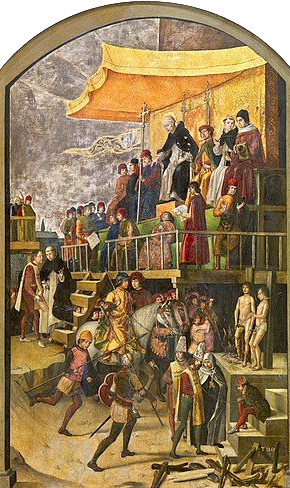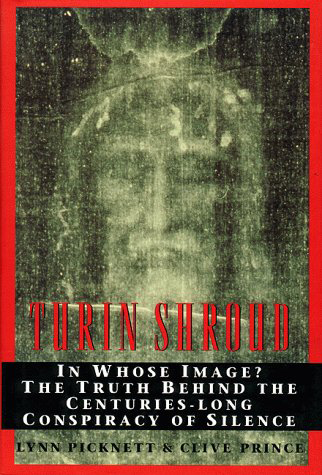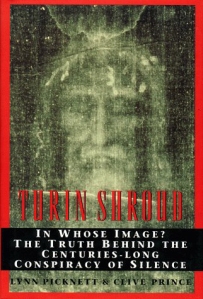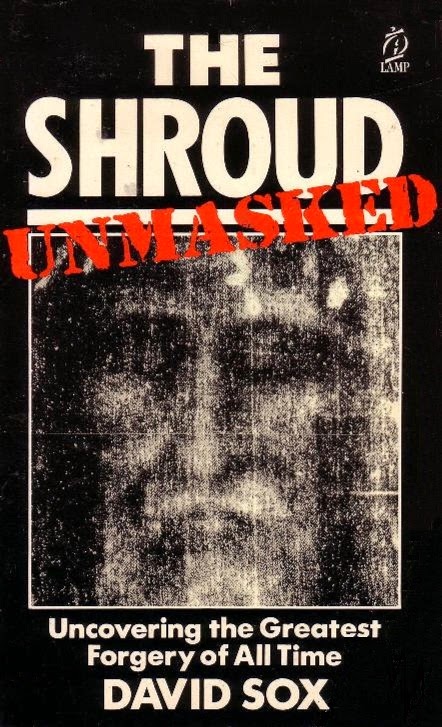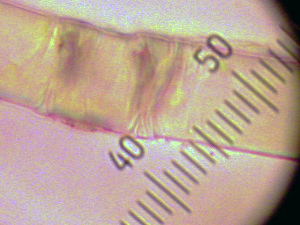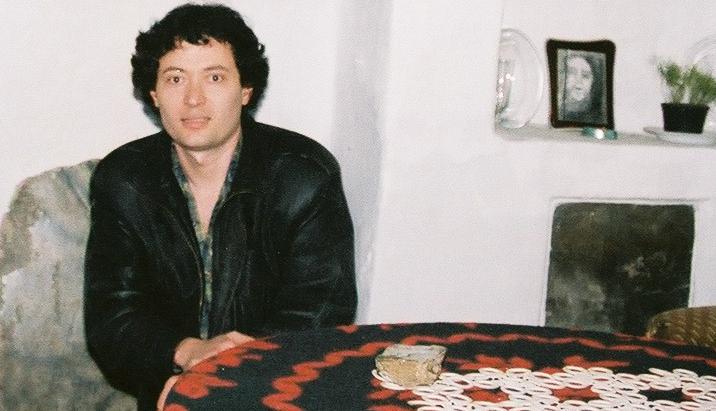Chapter III: Anthropocentrism and intolerance
I have told you, and will repeat it—for it cannot be repeated too often: Get rid of the superstition of ‘man’, or give thanks to the immortal Gods if you are by nature free; if ‘man’ as such is not of interest to you; if only Perfection interests you and if you love man only to the extent that he approaches—individually and collectively—the ideal type of the Race; insofar as, being of one day, he reflects that which is eternal.
Have you meditated enough on the history of the world to have noticed a puzzling fact, namely that few people have sinned more odiously against men than those who loved them the most, and wanted, with the most obstinacy, ‘to make them happy’ (even against their will) either in this world or in a Hereafter in which they firmly believed? Nietzsche, perhaps the only great master of thought that the West has produced on the fringes of Christianity, noticed it. ‘Christians no longer love us enough’, he said, ‘to burn us alive in public places’.[1]
Much has been said about the horrors committed by the Church of Rome in the name of defending Christian orthodoxy. What has almost always been forgotten is that the Holy Inquisition, the organ of this Church, acted out of love. It believed—like all good Catholics of the twelfth, thirteenth, or even seventeenth centuries—that outside the Church there was no salvation; that the individual who left the rigid path of dogma, and thereby ceased to be faithful, went, at his death, straight to hell.
The Church knew that men, inclined to sin since Adam’s disobedience, follow bad examples much more readily than good ones; that the heretic was therefore a public danger: a black sheep that was necessary, in case he refused the offered cure—that is to recant, the penance and the return to the bosom of the blessed flock—to cut him off at all costs from the whole population. And the most spectacular and terrible the aftermath of the heresy trial, the less likely it would be that the simple souls, who are the majority, would be tempted to rebel in their turn against the authority of the Church; the less likely they would be separated from God forever. The fear of God, which is said to be the beginning of wisdom, would be confused here with the fear of visible fire, with the fear of physical pain in the person who has, at least once, witnessed the burning of a heretic and saw and heard the man struggling in his bonds and screaming amid the flames.
Glory to Christ! the pyres shine, howling torches;
The flesh splits, sets fire to the bones of heretics,
And red streams on the hot coals
Smoke under black skies to the sound of holy hymns! [2]
As for me, I sincerely believe that the Inquisitor Fathers were not monsters. They struggled, in the face of a formal refusal to recant, to deliver a human being ‘to the secular arm’, knowing what torment the said ‘secular arm’ had in store for him. This decision, which today seems to so many people to be so ‘contrary to Christian love’, was nevertheless inspired by Christian love as they understood it, taking into account their interpretation of passages of the Scriptures concerning the Hereafter. They loved men, i.e. human souls, so much to accept the risk of knowing that they were in danger of perdition, in contact with the ‘teachers of error’.
If there is anything against which you should revolt at the thought of the horrors of the Holy Inquisition (unless one agrees entirely with it; why not, if you subscribe such faith?) it is certainly not the ‘wickedness’ of the inquisitor fathers, but that unconditional love of all men, including heretics and unbelievers to be brought back, brought to Jesus Christ. This was a love of all men for the sole reason that they are considered the only living creatures ‘having an immortal soul created in the image of God’, a love of which the members of the Holy Office were, along with all, or almost all, Christians of their time, the first victims.
______ 卐 ______
Editor’s Note: To those unfamiliar with theology this issue may seem anachronistic but it is not. As the Spanish filmmaker Luis Buñuel (1900-1983) said in his autobiography, ‘I was born in the Middle Ages’: something that I could also say.
When investigating the Turin shroud and visiting the Archdiocese of Mexico, I discovered the theological essays of Antonio Brambila (see my criticism: here, in Spanish), who died a month before radiocarbon tests dated the Turin cloth as a medieval product (not as a 1st-century miraculous cloth!). This Brambila priest explained in several articles what Savitri sums up in the passage above. He claimed that only the human being is eternal and that Jesus had shown it to us with his Resurrection (a Resurrection that left its mark, by the way, on the Turin sheet). The implication of Brambila’s theology was: either you believe in Christ or you are forever damned.
When I lived in the US, I was greatly surprised that many gringos, whom I previously viewed as non-Neanderthals, believed exactly the same shit through Protestantism. So what Savitri wrote decades ago is not outdated: Catholic fundamentalists like Brambila (who published his own Latin-Spanish translation of Augustine’s Confessions) and today’s last-ditch fundamentalist Protestants are still with us.
______ 卐 ______
To those who do not particularly love men, their destiny—salvation or perdition, in a hypothetical Hereafter—is a matter of indifference. The so-called ‘tolerance’ of the people of our time is, in reality, a complete disinterest in questions of dogma in particular, and metaphysical questions in general; a deep scepticism of the Hereafter and an increasingly widespread (though less and less avowed) indifference towards men. All in all, men are no worse off. Not only are there no longer any pyres in public places in countries of Christian, Catholic or Reformed civilisation (in Christian countries subject to the Eastern Orthodox Church there never were any). But a major excommunication, launched against an individual by any Church would have, in the West, no social consequences: the excommunicated would continue to live the next day as he lived the day before. No one would notice that he was excommunicated (except perhaps devotees in his parish).
______ 卐 ______
Editor’s Note: Exactly what happened to the priest of my family, Joaquín Sáenz y Arriaga, excommunicated for having dared to criticise the Second Vatican Council.
______ 卐 ______
If, as recently as 1853—a little over a century ago—an excommunicated monk, Théophile Kaïris, could have been imprisoned by order of the Greek government, and died in prison, it is not that the Greeks were, at that time, ‘less tolerant’ than their brothers in France or Germany. It was only that Greece was not then (as it is not today) the West, and that the teaching of the Eastern Orthodox Church was there (as is still today) held to be ‘national religion’, like that of the Roman Church is in Spain, Free Ireland, or Poland, despite the Communism imposed on the people: a living contradiction, given the largely human and ‘not of this world’ character of all true Christianity.
______ 卐 ______
Editor’s Note: If I manage to reproduce the entire translation of this chapter I will divide it, of nearly 14,000 words in the original French, into several entries.
I do it just out of curiosity to know exactly what Savitri was thinking. Some passages from the previous instalments of this new series suggest that Savitri was in line with what, at the end of my eleven books, I call the religion of the four words (‘eliminate all unnecessary suffering’). If to this we add that Savitri also subscribed to what from David Lane is known as the fourteen words she would be, together with Hitler and others from the Nazi leadership, the only ones whom I resemble. (Recall that Hitler wanted to close the slaughterhouses after the war; Göring forbade vivisection, Himmler disapproved of hunting animals for sport, etcetera.)
___________
[1 ] In Nietzsche’s Beyond Good and Evil.
[2] Leconte de Lisle, ‘The Agony of a Saint’, Poèmes Barbares.
